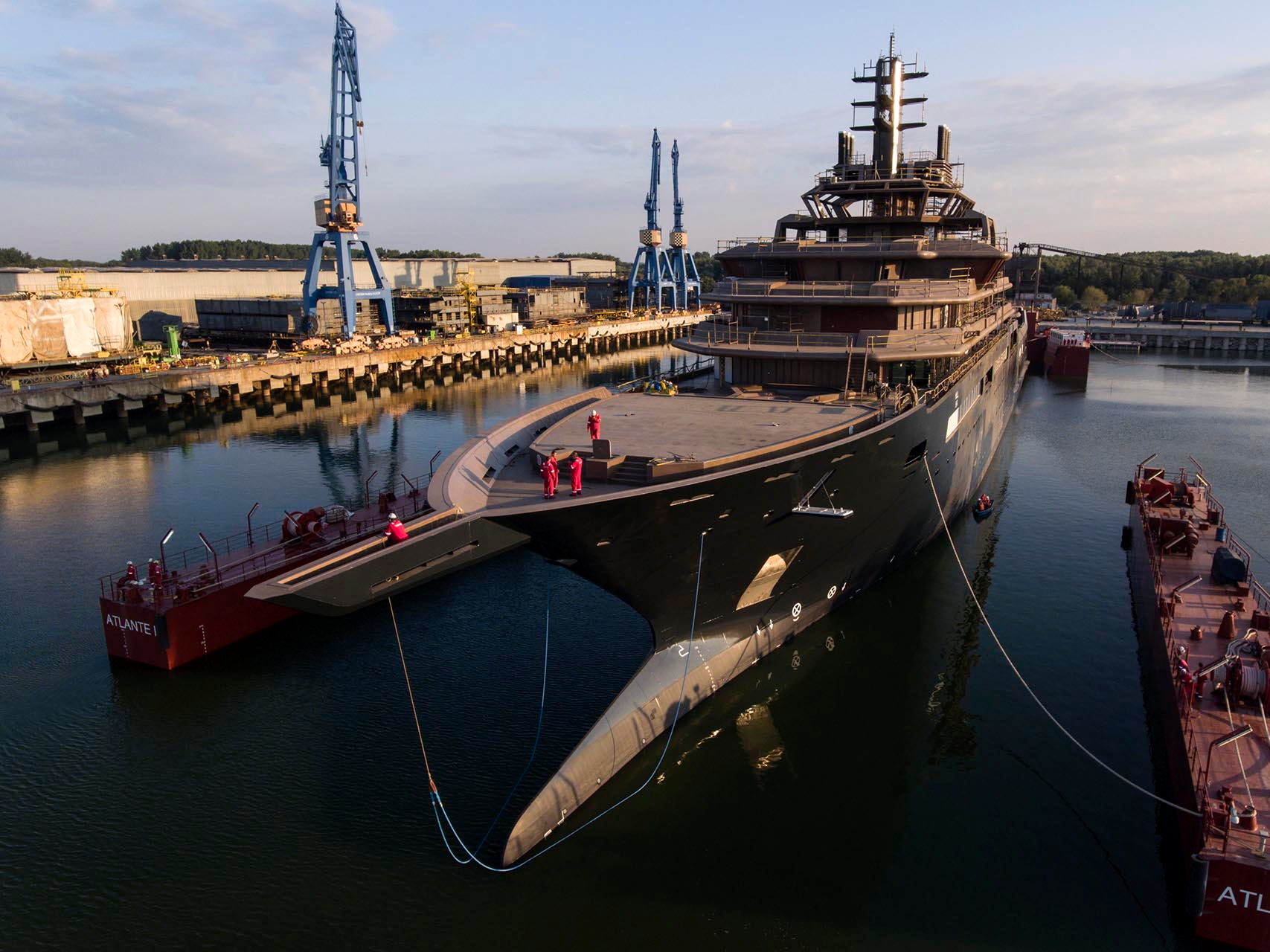- The world’s largest superyacht, a 600-foot vessel owned by a Norwegian billionaire, just launched in Romania.
- The REV Ocean was designed to carry out scientific research expeditions with the goal of safeguarding the oceans.
- It will also be available for charter to help support the costs of the scientific research missions.
- The vessel’s billionaire owner, Kjell Inge Røkke, will also use the yacht personally, but he’ll pay to rent it like any other customer, according to a publicist for the REV Ocean.
- The REV Ocean dethroned the 590-foot Azzam, which held the record for largest yacht in the world for six years.
- Visit Business Insider’s homepage for more stories.
The world’s largest superyacht, a 600-foot vessel owned by a Norwegian billionaire, just launched in Romania.
The REV Ocean dethroned the 590-foot Azzam, which had held the record for largest yacht in the world for six years.
Unlike most superyachts, the REV Ocean wasn’t only designed for luxury cruising. It was built to be a research vessel, carrying out scientific expeditions with the mission of safeguarding the world’s oceans.
The yacht will, however, be available for charter to help support the cost of its scientific missions, a publicist for the REV Ocean told Business Insider. The REV Ocean, which is on its way to Norway to be outfitted, will be fully completed in 2020.
Take a look at the 600-foot, record-breaking superyacht.
At 600 feet, or 182.9 meters, long, the REV Ocean is the world's largest superyacht.

It dethroned the 590-foot Azzam, which held the record for more than six years.
After 18 months of construction, the vessel was lowered into the water at the VARD Tulcea shipyard in Romania on August 24.

The REV Ocean was commissioned by Norwegian billionaire businessman Kjell Inge Røkke.
Røkke is worth an estimated $3.3 billion.

He owns almost 67% of Aker, a publicly traded shipping and offshore drilling conglomerate.
Røkke also started and funds a non-profit foundation, also called REV Ocean, that's dedicated to safeguarding and preserving the oceans.
The Norwegian businessman is one of more than 200 wealthy individuals who have signed the Giving Pledge, promising to give away at least half of their fortune to charity.
The REV Ocean was built "over an extensive and complicated build period" of 18 months.

The yacht was designed by Espen Oeino, who has designed some of the world's most famous yachts, including that of the late Microsoft co-founder, Paul Allen, the 414-foot "Octopus."
The REV Ocean was built to be a scientific vessel in addition to a cruising yacht. REV stands for "Research Expedition Vessel."

According to the REV Ocean foundation, the superyacht will be used by scientists for research relating to the impact of CO2 emissions on the ocean, plastic pollution, and unsustainable fishing.
"REV Ocean will strive to fill critical knowledge gaps, develop innovative solutions, and bridge science, business and policy sectors to achieve positive change," reads a statement from the foundation.
The REV Ocean will be able to hold 55 scientists and 35 crew members.

The vessel's onboard equipment will include scientific trawls, sonar systems, laboratories, auditorium and classrooms, moonpool, AUV and submarine, an ROV with 6,000 meters depth capacity, and advanced communication equipment.
The superyacht will also be available for charter to help fund its scientific missions.

The vessel's billionaire owner, Røkke, will also use the yacht personally, but he'll pay to rent it like any other customer, according to REV Ocean's communication manager, Lawrence Hislop.
"The primary focus, branding and emphasis, however, is on science," Hislop told Business Insider.
As a charter vessel, the REV Ocean will have the capacity to carry 28 guests and 54 crew.

According to its website, the superyacht will be available for charter "to private individuals, companies, and institutions seeking to improve their awareness of the ocean."
The price of chartering the yacht is not yet finalized, but REV Ocean is in the process of negotiating a contract with a yacht chartering company, Hislop told Business Insider.
Next, the ship will go to Norway to be fully outfitted.

In the coming weeks, the REV Ocean will be towed down the Danube River and into the Black Sea. It will then pass through the Bosporus Strait in Istanbul, cross the Mediterranean, traverse the Strait of Gibraltar, and eventually end up at the VARD shipyard in Brattvag, Norway.
The journey is expected to take between 30 and 35 days.
The vessel will be fully complete sometime in 2020.

Source: REV Ocean

